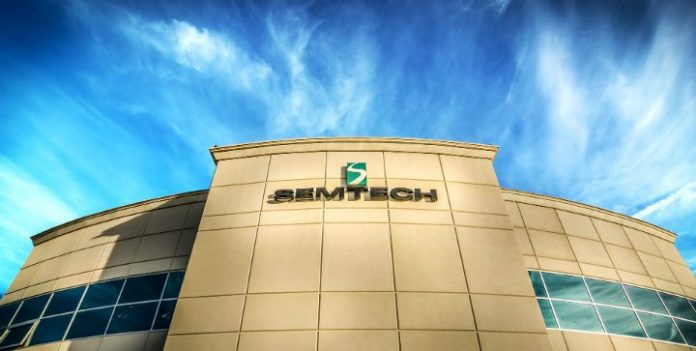LoRa, or long-range radio, is moving to a new level just as mobile network operators are rolling out their own low-power networks to compete with LoRa-based wide area networks. Semtech, the chipmaker that developed LoRa, is increasing both the link budget and the battery life for LoRa devices, while decreasing the chip’s size by 45%.
LoRa is the modulation scheme generated by Semtech’s transceiver chips, and the company says the next generation of these chips will use a 50% reduction in receiver current to help extend the battery life of LoRa-based sensors by up to 30%. Semtech’s Vivek Mohan, director of marketing for wireless IoT products, said LoRa devices already enjoy 70-80% more battery life than devices that use narrowband IoT. He said this difference will be even higher with the new devices, which are scheduled for commercial availability during early 2018. Mohan said one reason LoRa-based modules have longer battery life is their location-tracking technology, which does not rely on a power-hungry GPS chip.
Small, inexpensive batteries are a key component of wireless internet of things modules. Mohan said some companies are starting to use 3D printing technology to produce tiny, long-lasting batteries. Some are made of zinc and others are tiny lithium batteries enclosed in credit card-sized pouches.
Mobile network operators are certain that not all tiny IoT batteries will rely on LoRa to connect to the internet. The three largest makers of cellular network radios, Ericsson, Nokia and Huawei, are all hard at work on narrowband IoT equipment. At present they are divided into two competing camps, with the European vendors in one and Huawei in the other.
Narrowband IoT adds the cost of licensed spectrum to the equation, but for many deployments it will eliminate the cost of gateway equipment. LoRaWAN uses IoT gateways to aggregate data traffic generated by sensors and send it to the cloud over cellular or wireline connections. NB-IoT promises direct device-to-base station connectivity, meaning companies that deploy this technology shouldn’t need to purchase gateways.
Many analysts who follow the internet of things say trying to figure out which technology will win the IoT race is an overly simplistic way to evaluate the opportunity. The number of IoT use cases is developing almost as quickly as the technologies are, and different technologies are likely to emerge as the best choices for certain use cases.
Semtech’s Mohan said that right now the dominant use cases for LoRaWAN are agriculture and ranching (soil sensors and connected cattle), smart cities (connected meters, trash receptacles, etc.), and smart buildings (connected equipment in parts of buildings that are not reached by Wi-Fi.) He also said he foresees numerous consumer IoT use cases based on wearable technologies, and that the line between consumer and commercial networks is blurring.
Semtech’s interest in consumer applications makes sense in light of its relationship with Comcast, which counts millions of U.S. consumers as its customers. Comcast is in the process of launching LoRaWAN networks in several U.S. cities.
“By the end of 2018 they will be in about 15 cities in the U.S.,” Mohan said. “They are being opportunistic and going where the business is.” Comcast will use its cable and fiber networks to backhaul its IoT traffic to the wider internet. LoRaWAN could give the cable operator a way to compete head-on with mobile network operators in the market for IoT connections.

